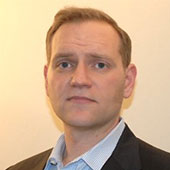Let me give you an example: When a project goes live, an email message typically gets sent out, discussing the project and its benefits and thanking contributors. This is a great, quick, easy way, not only to share information with the larger company, but also to acknowledge the efforts of teammates. Most such announcements include a shout out to a UX colleague. Inevitably, they talk about the magic they’ve created. For the most part, this is a great thing for the visibility of UX folks within the company. These email messages show that User Experience is part of the team, effecting real, positive change both within the company and for clients.
But they don’t ever refer to anyone else on the team as a magician—only the UX folks. So what happens? The next project includes UX time, but because of competing issues, it’s almost never enough time. When time estimates get called into question, the good, well-intentioned, smart folks doing the project sizing almost always point to our magical qualities as reasons for cutting the time for User Experience short. A typical conversation might go like this:
Me: “Hey, I noticed that you cut the UX time by about 20%. Given the requirements and the client’s very real focus on delivering a best-in-class user experience and a very cutting-edge user interface, we really need that additional time to be able to deliver.”
Project Sizer: “Yeah, I know, but the timeline is short, and the budget is coming under attack. I saw that work you guys did for that other client, and people described it as magical. So I know you can work that magic here, too.”
Me: “Yes, we are really talented, but we still need the right amount of time to do that work. Have the technical folks or business analysts been cut as well?”
Project Sizer: “Well, no…”
This story highlights the detrimental effect superlatives can have on the perception, not of the value User Experience provides, but the process that is necessary for User Experience to provide that value. So, while it may feel great to have someone refer to you in mythic terms, in actuality, it just makes it harder for us to justify what we do, when, and how we do our jobs.
This type of interaction frequently occurs in a project-implementation culture, in which people do not deem User Experience to be critical.
